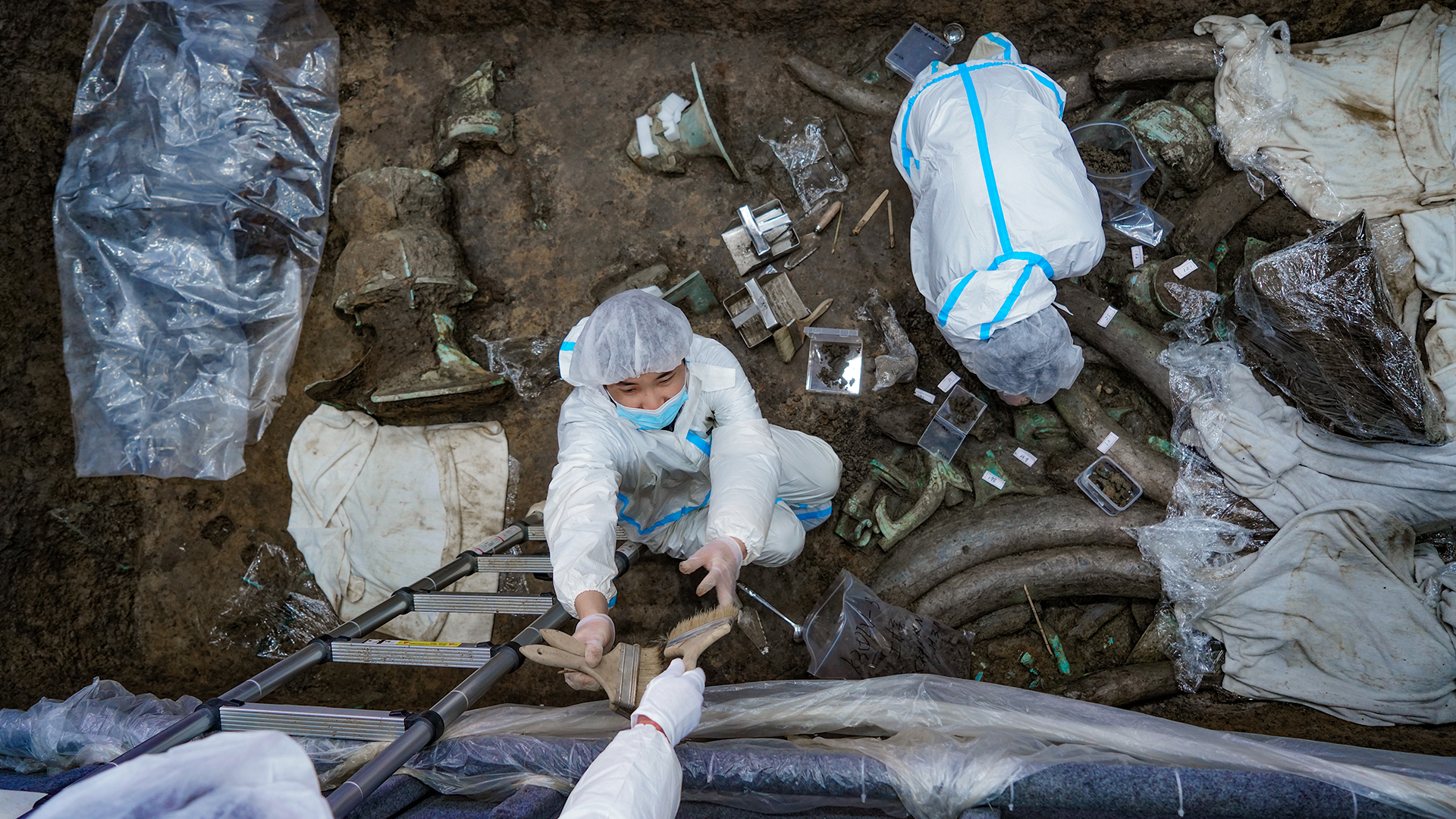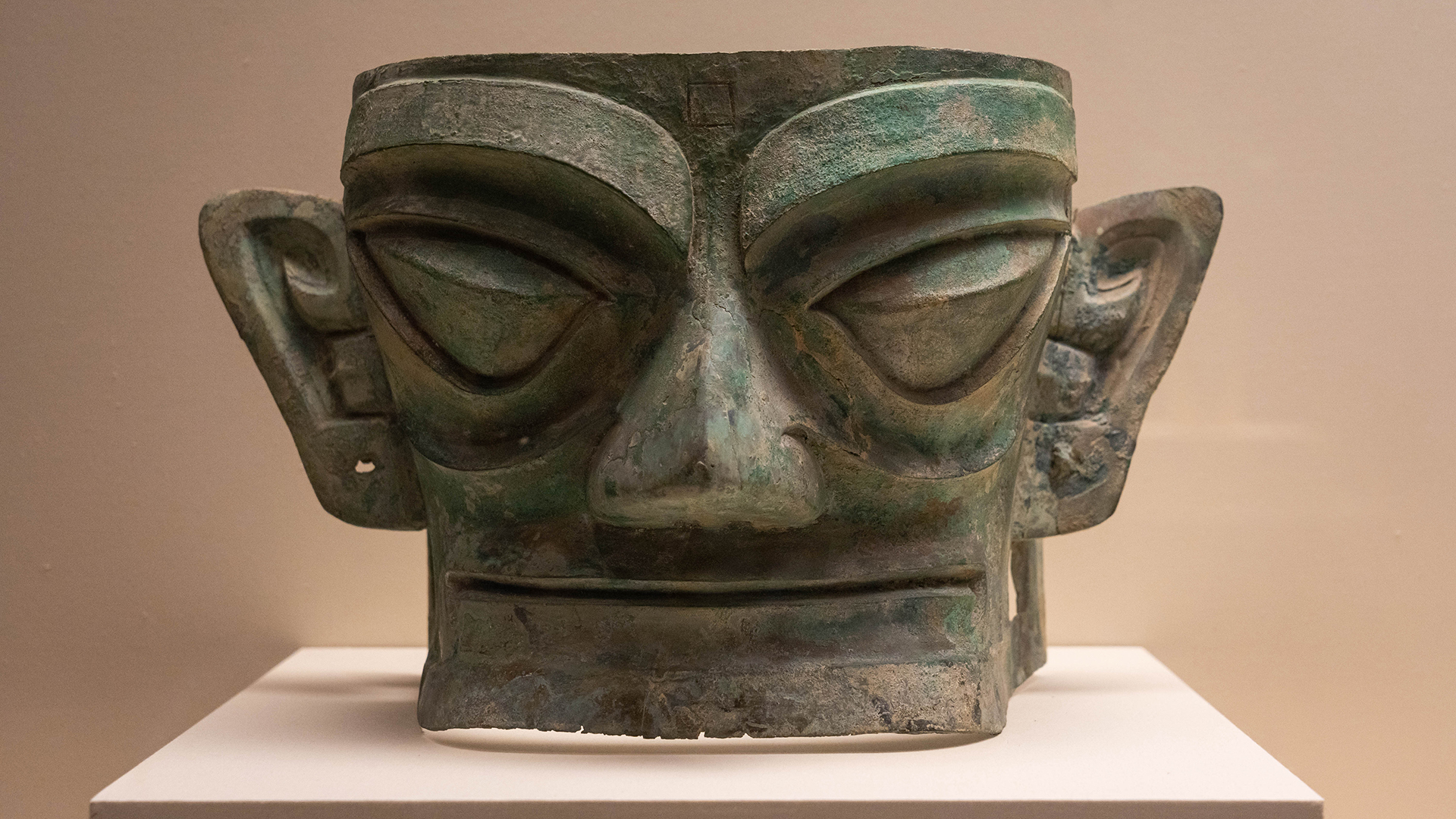Mysterious artifacts hint at the 'fairy world' of ancient China
Bronze Age artifacts found in China were burned to commune with 'another realm.'

A bronze sculpture of a snake with a human head, along with a large number of other artifacts including finds made of bronze, jade and gold, have been discovered in a series of pits at the archaeological site Sanxingdui in Sichuan, China.
The discoveries also include a bronze box with jade inside, gold masks and a bronze altar, Xinhua news agency reported.
"The sculptures are very complex and imaginative, reflecting the fairy world imagined by people at that time, and they demonstrate the diversity and richness of Chinese civilization," Zhao Hao, an associate professor at Peking University and excavation leader at one of the Sanxingdui pits, told Xinhua.
Related: 20 'Terracotta Warriors' discovered in pit around secret tomb of China's 1st emperor
Two pits were excavated in the 1980s, and six more have been excavated since 2020, Xinhua reported. Archaeologists have discovered a total of 13,000 artifacts that are believed to date to the Bronze Age, between 4,500 and 3,000 years ago, according to Xinhua.
As for the recently-unearthed sculptures and artifacts, "It’s great to find more,” Chen Shen, a senior curator at Toronto’s Royal Ontario Museum (ROM), told Live Science. Shen noted that the first two pits to be excavated in 1986 contained artifacts that were similar to the new discoveries.
Shen curated an exhibition on Sanxingdui at ROM in 2002, and has conducted research on the excavations and written about the site. To date, no evidence of human burials or cremation have been found there, suggesting that the pits were likely not funerary, Shen said. However, the creation of the pits and the addition of artifacts may have served a ritual purpose, Shen added.
Sign up for the Live Science daily newsletter now
Get the world’s most fascinating discoveries delivered straight to your inbox.

Some of the artifacts show signs of being deliberately broken or burned, Jay Xu, the director and CEO of the Asian Art Museum of San Francisco, told Live Science in an email. "The purposeful breakage and burning of highly valuable materials such as jades and bronzes shows us that this was not random or wanton destruction," said Xu, who has researched and written extensively about the site but who was not involved in the recent discoveries.
"Bronze was so valuable — especially since it could be melted down and reused — that it tells us that the destruction of these images served an important ritual purpose," Xu said. "As with other human societies, ritual breaking and burning is often about a sanctified passage or communion with a world beyond our own. These burials [of artifacts] then, were perhaps an attempt to move this society through crises with guidance or help from another realm," Xu said.
Rowan Flad, an archaeology professor in the Department of Anthropology at Harvard University, also agreed that ritual destruction was important for the people who used this location. "I tend to think that these pits reflect intentional episodes of ritualized destruction, perhaps a periodic public destruction of wealth by social, political or spiritual leaders within the Sanxingdui community," Flad, who was not involved in the recent excavations, told Live Science in an email.
Researchers will know more when "we are able to have a complete sense of the objects within the new pits, their processes of disposal, and the relationships among things," Flad said. (Live Science reached out to the Sanxingdui archaeological team, but at the time of publication the scientists did not have permission to conduct an interview.)
Originally published on Live Science.

Owen Jarus is a regular contributor to Live Science who writes about archaeology and humans' past. He has also written for The Independent (UK), The Canadian Press (CP) and The Associated Press (AP), among others. Owen has a bachelor of arts degree from the University of Toronto and a journalism degree from Ryerson University.










